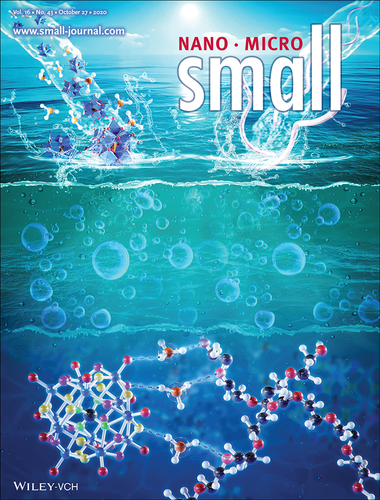Adhesive Coacervates: Adhesive Coacervates Driven by Hydrogen-Bonding Interaction (Small 43/2020)
Graphical Abstract
In article number 2004132, Hongbo Zeng and co-workers discover a novel coacervation phenomenon by mixing silicotungstic acid and nonionic polyethylene glycol in water, driven by hydrogen bonding interactions, which provides a new platform for engineering multifunctional coacervate materials as tissue glues, wound dressings and membrane-free cell systems.





